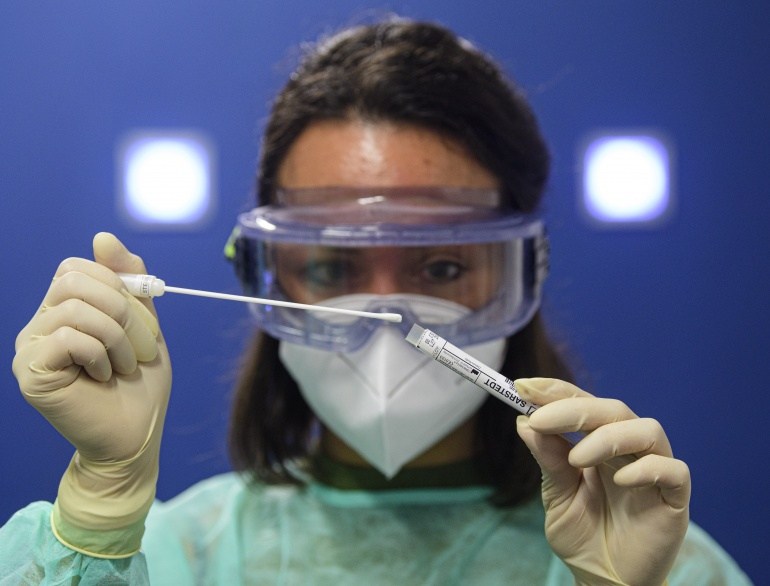As an increasing number of people are being tested for the coronavirus, virologist and interfederal Covid-19 spokesperson Steven Van Gucht explain the difference between the two different types of tests.
More and more people are being tested, usually because they have symptoms, according to Van Gucht. "But sometimes [they are tested] because they have had contact with someone who is infected, or because they are returning from an area with a high risk of infection, the so-called orange and red zones in Europe," Van Gucht added.
Two tests, which give different kinds of information, can currently be carried out, on the basis of different indicators: the PCR-tests, done with nose-throat swab, and antibody tests in the blood.
PCR tests
For these kinds of tests, a swab is placed in your nose to collect material. On that collected material, a PCR is then carried out.
This method detects the virus. "In principle, we do not detect the entire virus, only a small part of the virus, namely the genetic material, or the RNA," said Van Gucht.
"When a PCR test is positive, it means that a trace of the virus has been found in your nose. Usually, this means that you are also contagious to your surroundings, and that you have been infected with the virus," said Van Gucht.
However, when the signal is very weak but still positive, it can also indicate an elderly infection. "One can still find a trace of the virus, but it is no longer active," Van Gucht said.
It is difficult to determine whether someone is still infectious based on such a test. The GP has to determine the risk.
Another possibility is that you test positive for the virus, but that you have no symptoms. "You may never develop symptoms, or you may develop symptoms in the days after the positive test. However, you may already be very infectious, even without showing any symptoms," Van Gucht said, stressing the importance of quarantining in case of doubt.
Related News
- Exponential growth of new infections 'seems to have stopped' in Belgium
- Belgium enters 'crucial week' to prevent new coronavirus lockdown
- Belgium mulls limiting beach trips to ensure social distancing
Additionally, a negative PCR test is not a safe-conduct to disregard quarantine. "A test can be negative, but it is possible that you will start to excrete the virus in the following days, and infect your environment," Van Gucht said.
People who have had a high-risk contact or returned from a red zone still have to quarantine, even if their first test was negative. "Quarantine is the basic precaution; a test only provides additional information," Van Gucht stressed.
Approximately nine days after the last possible exposure to the virus, a second PCR test can be carried out. "If that test is negative, it is possible to shorten the quarantine, and you do not have to sit out the full 14 days," he said.
Antibody or serology tests
In this case, the test does not look for the presence of the virus itself, but at certain substances that your body produces to combat the virus, the so-called antibodies.
"These antibodies can remain in your body for many months. When such a test can show these antibodies, it means that you have had an infection in the past, but that may have been months ago," Van Gucht said.
A serology test does not indicate whether or not you are still infectious. "People who have antibodies may still be infected with the virus, we do not know that for sure," said Van Gucht. "It is part of your immune response, but we do not know how strong that immune response is."
For this reason, people with antibodies still have to respect the basic rules and make sure they do not get infected again, and make sure they do not start infecting others with the virus.
Maïthé Chini
The Brussels Times

